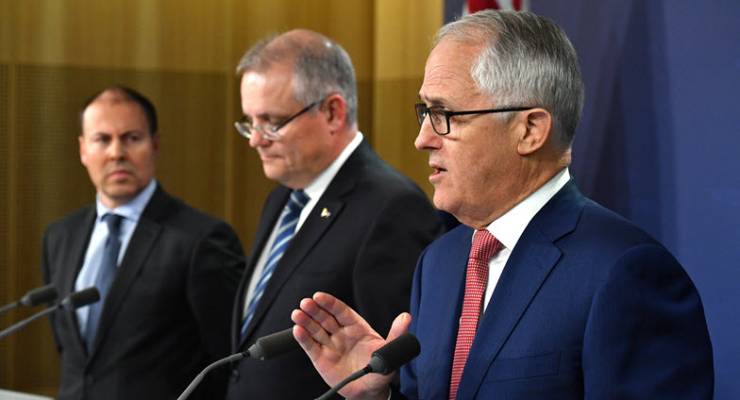
“As a policy think tank, policy around climate and energy is a gift that keeps on giving.”
So went the wry remark of the Grattan Institute’s Tony Wood at the opening of Wednesday’s symposium to discuss Victoria’s post-Hazelwood electricity future.
Lack of clear, strong policy and too much opining at both state and federal level along with persistent misinformation were the uniting themes.
Organised by the Australian Academy of Technology and Engineering, the event took place in the Woodward conference room in Melbourne University’s law building — a tangle of unruly leafless trees in university gardens the view from one wall sized window, the Melbourne CBD skyline from the other.
The symposium was groaning under the weight of yet more headlines concerning energy policy in Australia and the role government should play — Prime Minister Malcolm Turnbull had once again threatened to intervene in the gas markets after new forecasts from Australian Energy Market Operator (AEMO) and Australian Competition and Consumer Commission revealed shortages could potentially be three times worse than previously expected. What has been lost in that assessment, said Wood, is the word “potentially”.
“The numbers he’s citing are the worst — not, say, the middle, but the absolute worst possible scenario,” he said. “Now, why would he say that? Maybe because if it’s anything better than the absolute worst, he can take some credit for it?”
The accusation that playing politics with energy and climate in the last 15 years had poisoned policy was not limited to any one position on the debate (although the scientists and economists from CSIRO steered clear of passing any explicit judgement.) — nor did any side or level of politics get off scott-free.
“Action by state governments in the absence of action by the federal government on climate change absolutely makes sense,” said Wood. “The [Victorian] renewable energy target makes no sense. They should have gotten together with the other states and absolutely focused on a national version of the renewable energy target, which would be consistent with what the states say they want — a national approach.”
And while it was never explicitly said, it was clear the speakers did not feel the federal government’s ongoing threat of invention represented an actual policy. As Chloe Munro, of the expert advisory panel for AEMO and the Finkel review put it, even if it does not add up to a coherent national policy, “at least the states have a plan”.
Australian Industry Group chief executive Innes Willox made the same point, from an industry point of view.
“The electricity market needs investment badly. But it’s not going to happen without a clear and credible direction around energy policy and around climate policy and that’s what industry is calling out for,” he said.
Nor, according to Willox, was the backlash against moves like the one to close Hazelwood solely confined to people who oppose renewable energy.
“AIG ended up calling for Hazelwood to stay open — it was a hard decision,” he said in a panel discussion after his speech. “And one of the groups who said we should do this were the businesses involved in renewables — ‘if the lights go off because of this, we’ll be the ones who get blamed’, they told us.”
At least some of the blame lies squarely with the media, according to many speakers, who recounted factual inaccuracies in the reporting of both recommendations and responses to expert opinion. Chloe Munro of the expert panel for AEMO lamented the “misinformation” about the report they recently released, while AEMO head Damian Sanford shot a look a look at the Australian Financial Review’s Ben Potter when he talked of the “ocillations” of that organ on energy policy.
Wood made the same point about reporting on the Finkel review: “The media now reports that Alan Finkel reccomended a 42% renewable energy target by 2030 — that’s simply wrong. It’s the outcome of a piece of modelling, done by Jacobs based on the clean energy target with a whole lot of assumptions…and they’re all wrong.”
But, of course, the issue is very, very complicated, taking in science, technology and economics. Speaker after speaker — in particular Paul Graham, chief energy economist at CSIRO — went through slide after slide, modelling projections of the costs and emissions of various technologies and energy sources, in various policy settings. Graph after multi-coloured graph. I hoped I wasn’t the only one who started to find them alien and faintly incomprehensible (albeit very pretty).
In this flurry of confusion, opinion and vested interest, Wood summed up:
“If I have an opinion, and I want some information to back that up, I can find that information.”








The long term policy seems so obvious and scientifically it is. Getting the rent seekers out of it is also a part of what must happen. There has been hopeless stupidity from the Coalition since the days of Howard who defunded the Cooperative Research Centre for renewable energy and gave the money to a coal industry that was coining it, for the unicorn of clean coal. Since then, they have refused to countenance any forward looking options. This would explain why. https://jeremybuckingham.org/2015/03/27/the-revolving-door-between-miners-and-government/
It also explains why the residents of regional NSW get little help from the coalition in the face of ludicrous development applications.
The sad reality is that rent seekers and other parasites can just as easily attach themselves to any sufficiently large body of warm funding.
Eternal vigilance to exclude them would be favourite.